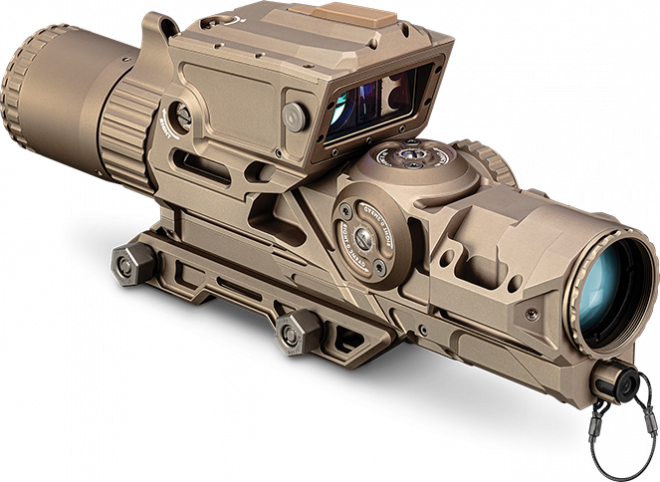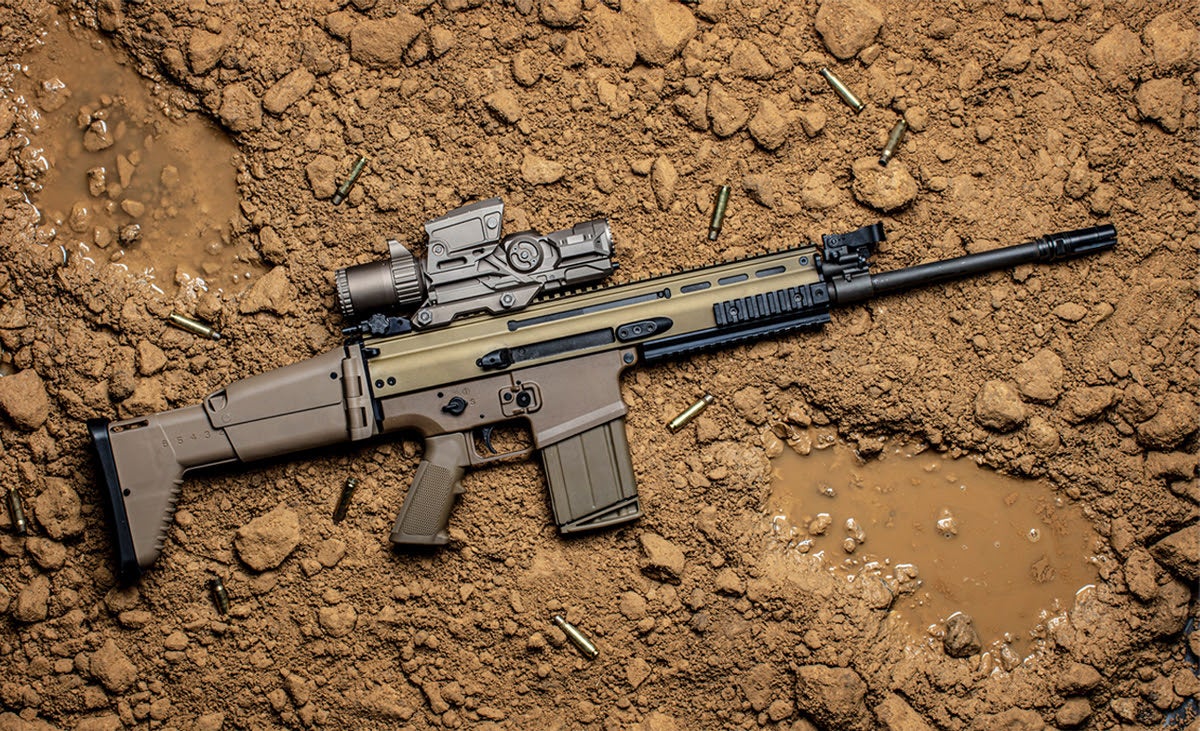Despite the Coronavirus pandemic the US Army continues its Next Generation Squad Weapon program and has issued an OTA (or Other Transaction Authority) award to Wisconsin-based Vortex soliciting them to produce a prototype Next Generation Squad Weapon-Fire Control (NGSW-FC).
Vortex Optics have announced that they have been selected to deliver production ready prototypes of their NGSW-FC optic for trials and evaluations. An OTA is a Department of Defense contract for the development of prototypes, research and production projects. It appears that the optic will be used during the upcoming Soldier Touch Point (or STP) evaluations which see troops use the rifle in field conditions and deliver user feedback. It is currently unknown if Vortex are the only company to be issued a prototype OTA or if other Fire Control prototypes from other companies will also be evaluated. (Update 22 April, 2020: L3Harris Technologies have also been awarded an OTA.)
The US Army launched the NGSW-FC program as a companion to the NGSW search back in January 2019. Here’s what the Army’s original solicitation for a ‘Squad-Fire Control’ was looking for in a fire control unit:
to provide a ruggedized fire control that increases accuracy and lethality for the dismounted warfighter on the battlefield. Capabilities are achieved through integration of advanced technologies to provide a fire control system consisting of a direct view optic, ballistic calculator, atmospheric sensor suite, and laser range finder. Combining these features with an in-scope digital overlay produces an adjusted aim-point for the Soldier within the field of view.
The Vortex Fire Control unit has been in development for a number of years, they describe it as the direct-view optic with “1-8×30 Active Reticle™ Fire Control”. It is a variable-power, first focal plane rifle scope that is augmented with an overlaid digital display with what the company describes as ‘Active Reticle™’ which they say “has been proven to increase hit percentage and decrease time to engage”.
Active Reticle achieves this by combining data from a laser rangefinder (with a range up up to 1km), an on-board ballistic engine/calculator and an atmospheric sensor suite which calculates where to aim at a target and then projects this onto the first focal plane using a “programmable active matrix micro-display”.
I recently wrote about the number of NGSW and NGSW-FCs the US Army hopes to procure. $35.822 million has been set aside for initial NGSW-FC procurement, which breaks down to the majority of the funding going towards hardware development costs while the rest is earmarked for technical publications, engineering change proposals and package fielding costs. An initial 3,983 units are to be procured between April 2022 and March 2023. The original solicitation notes that the end procurement goal is for up to 30,000 fire control units.
Here’s Vortex’s statement on the solicitation:
For the last 18 years, innovation has meant everything to Vortex Optics. It’s meant our emergence as a leader in the sport optics industry. It’s allowed us to provide our customers the tools they need to pursue and protect what matters most in their lives.
But starting today, our dedication to innovation means something even more.
We’re honored to announce that the US Army – PM Soldier Lethality awarded Vortex® an agreement to deliver the Next Generation Squad Weapon-Fire Control (NGSW-FC) Production Ready Prototypes for Soldier TouchPoint (STP) evaluations.
As a direct-view optic, the 1-8×30 Active Reticle™ Fire Control provides everything you’d expect from a variable-power, first focal plane riflescope. When augmented with an overlaid digital display, however, it provides features unheard of in a traditional small arms fire control.
“As a veteran-owned, non-traditional defense contractor, it’s very important to us that we listen to warfighters,” said Sam Hamilton, Chief Technical Officer at Vortex Optics. “When we learned of the soldier’s need for increased lethality out of their squad weapons—combined with the Small Arms Ammunition Configuration (SAAC) study, which proved that advancements in electro-optical fire control had the greatest potential to increase soldier’s lethality—we knew there was an important capability gap we could fill.”
The Vortex Optics 1-8×30 Active Reticle™ Fire Control is built around a revolutionary technology based on many years of internal research and development, along with multiple cooperative development efforts with the Army’s PM-Soldier Weapons group. The end result is Active Reticle™, which has been proven to increase hit percentage and decrease time to engage during US Army Soldier touchpoints over the last two years.
Even in the case of a battery power loss, soldiers are left with an uncompromised 1-8x, direct-view optic and glass-etched reticle exceeding current capability.
Hamilton said, “By combining a unity power 1-8x direct view optic utilizing a first focal plane, etched reticle, a 1km capable laser rangefinder, state of the art on-board ballistic engine, atmospheric sensor suite, and programmable active matrix micro-display overlaid onto the first focal plane, Active Reticle™ delivers a true multi-mission fire control enabling everything from CQB to designated marksmanship at the extents of the NGSW’s effective range.”
For the soldier in the field, that means the freedom to devote their entire focus downrange. Hamilton said, “End-users will no longer need to leave their field of view to consult separate rangefinders or ballistic calculators, slowing them down and compromising their situational awareness.”
 Your Privacy Choices
Your Privacy Choices


